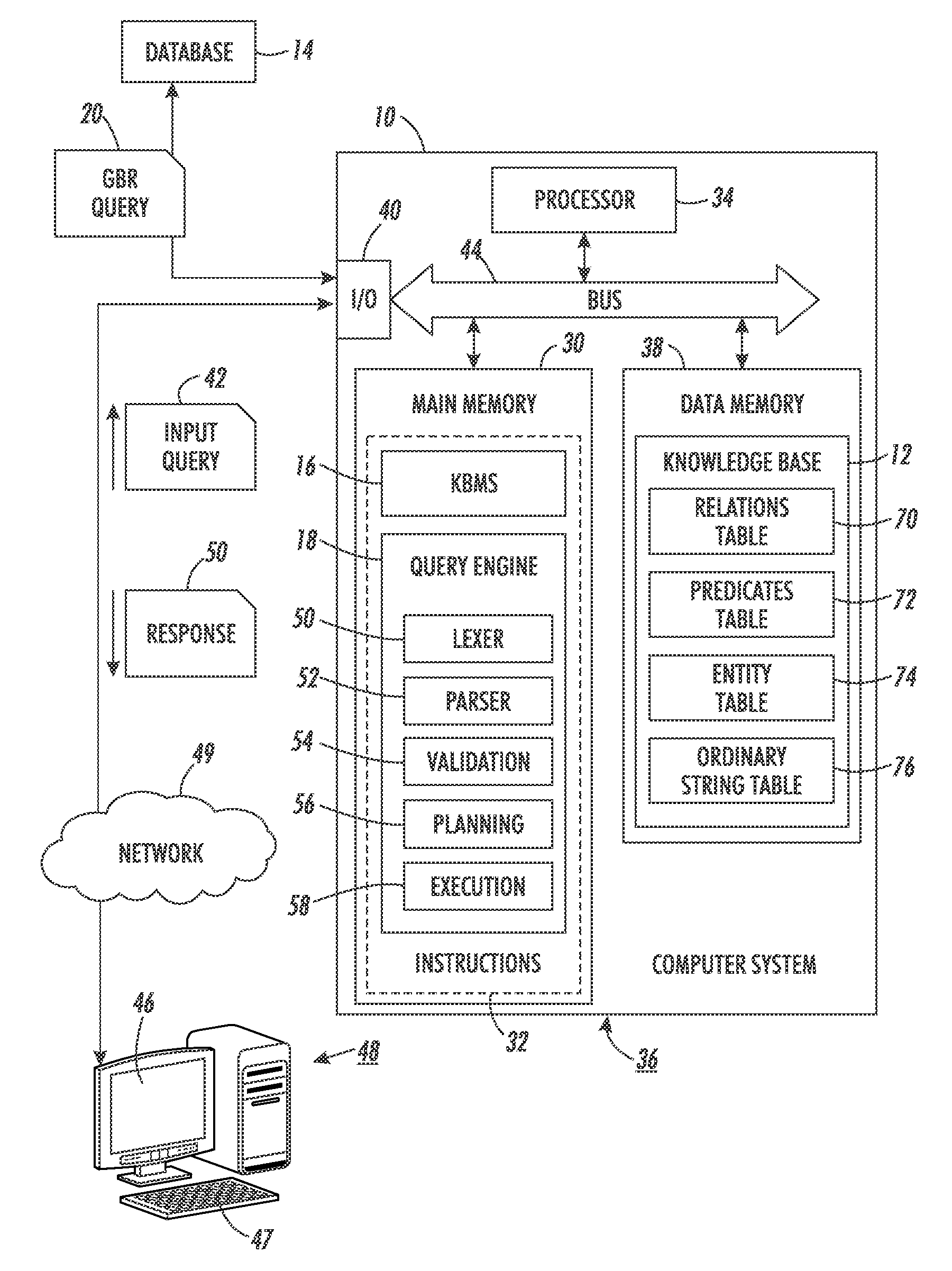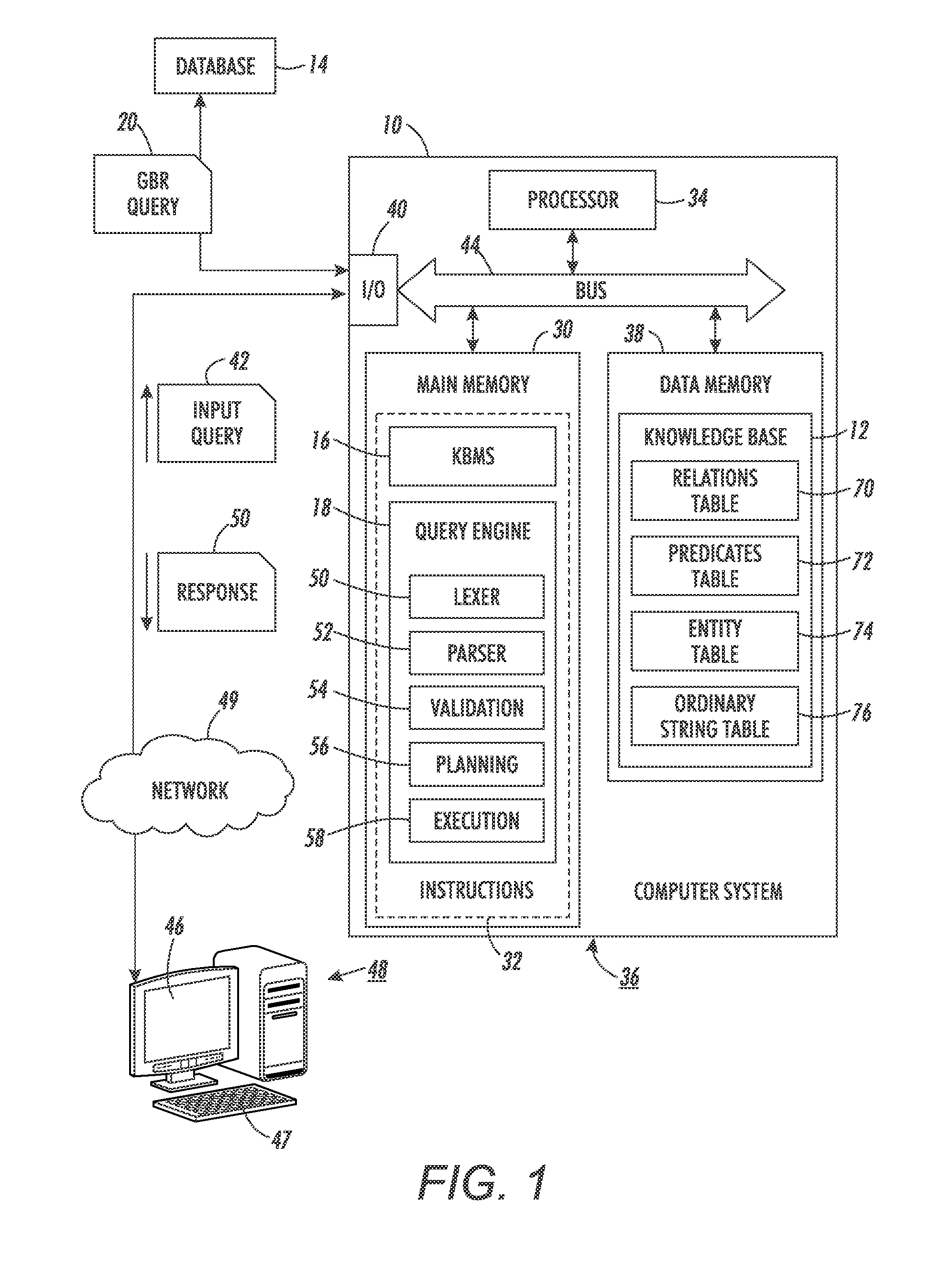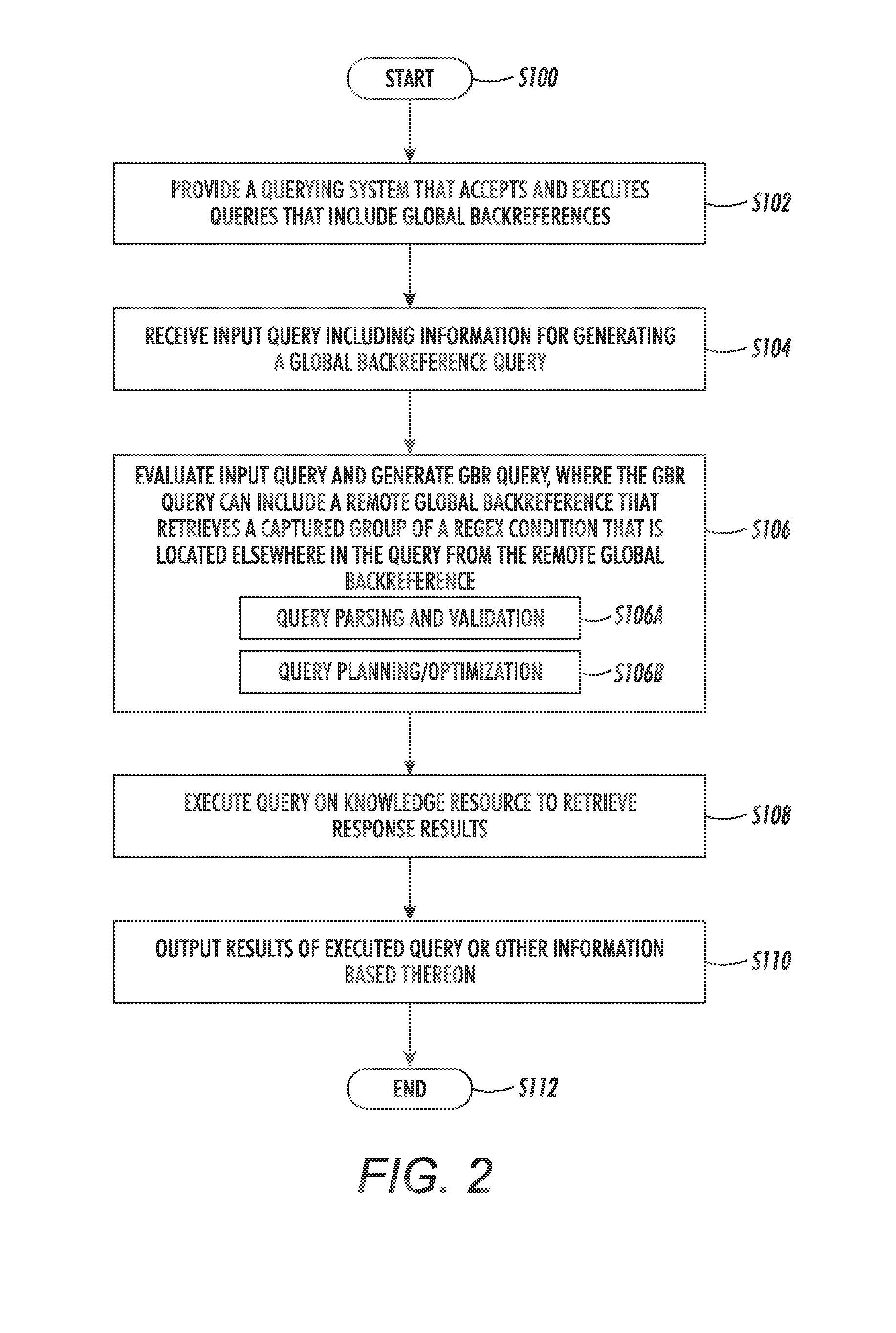Global regular expression backreferences
a global regular expression and backreference technology, applied in the field of querying a knowledge resource, can solve the problems that current systems are not able to achieve this efficiently, i
- Summary
- Abstract
- Description
- Claims
- Application Information
AI Technical Summary
Benefits of technology
Problems solved by technology
Method used
Image
Examples
example 1
[0029]In this example, the aim is to obtain a large list of family names and use it as a source of a lexical feature for a Named Entity Recognition system. The 2012 download of Freebase (see, Kurt Bollacker, et al., “Freebase: a collaboratively created graph database for structuring human knowledge,” Proc. 2008 ACM SIGMOD Intern'l Conf. on Management of Data, pp. 1247-1250) includes 2.1 million entities of type / people / person, each one having a / type / object / name property. The value of this property is the full name string of the person. There does exist a property called / people_with_this_family_name, linking family names to people, however, it is not systematically instantiated, i.e., only a few of the entities of type / people / person are associated with this fact. Thus, it would be advantageous to use the name property value to extract all the family names from the name strings, using regex matching.
[0030]As an example, TABLE 1 illustrates a first query expressed in a conventional ...
example 2
[0036]In this example, the aim is to extract from the YAGO knowledge resource (see, Fabian M. Suchanek, et al., “Yago: A Core of Semantic Knowledge,” 16th Intern'l World Wide Web Conf. (WWW 2007), pp. 697-706) all the possible triples [L1 locatedIn L2]. Both L1 and L2 are variable nodes. As will be appreciated, text strings that are identified in a database as being an ENTITY of type “location” do not always specify the larger location in which they are located. In the YAGO resource, the relation locatedIn is defined between locations, but only a small subset of the entities of type / location have this property instantiated (only 3.38% of 412,000 locations have this property in the 2009 version, for example). To extend the coverage of this resource, an illustrative query takes advantage of the type property that links YAGO entities to Wikipedia categories: in many cases, a location L has a wikicategory with an identifier (or URI) that contains the preposition “in” followed by the na...
PUM
 Login to View More
Login to View More Abstract
Description
Claims
Application Information
 Login to View More
Login to View More - R&D
- Intellectual Property
- Life Sciences
- Materials
- Tech Scout
- Unparalleled Data Quality
- Higher Quality Content
- 60% Fewer Hallucinations
Browse by: Latest US Patents, China's latest patents, Technical Efficacy Thesaurus, Application Domain, Technology Topic, Popular Technical Reports.
© 2025 PatSnap. All rights reserved.Legal|Privacy policy|Modern Slavery Act Transparency Statement|Sitemap|About US| Contact US: help@patsnap.com



